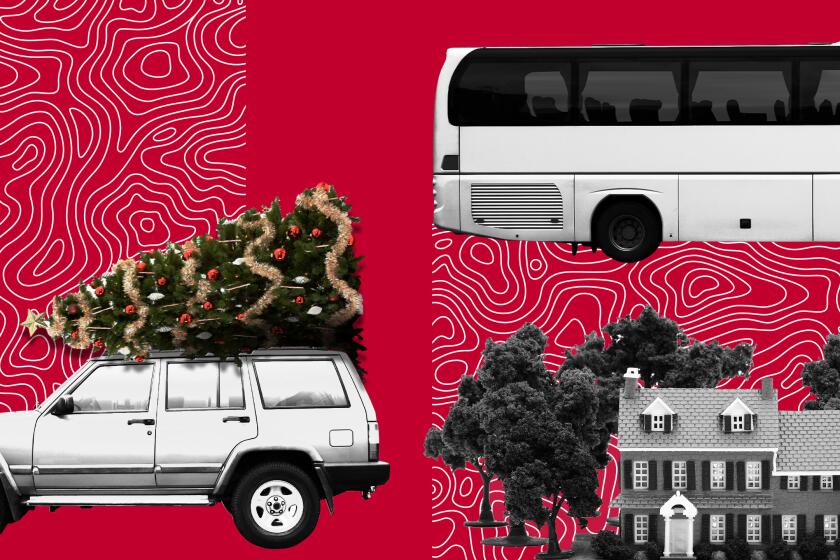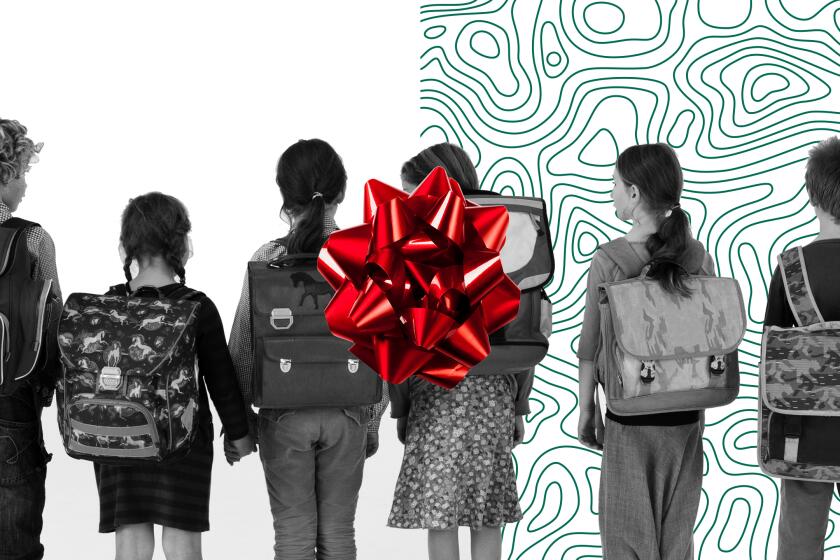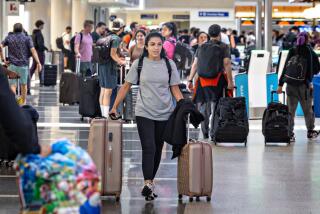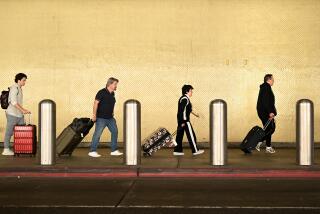New CDC Thanksgiving guidelines ask you to stay home. But what if you’re about to travel?
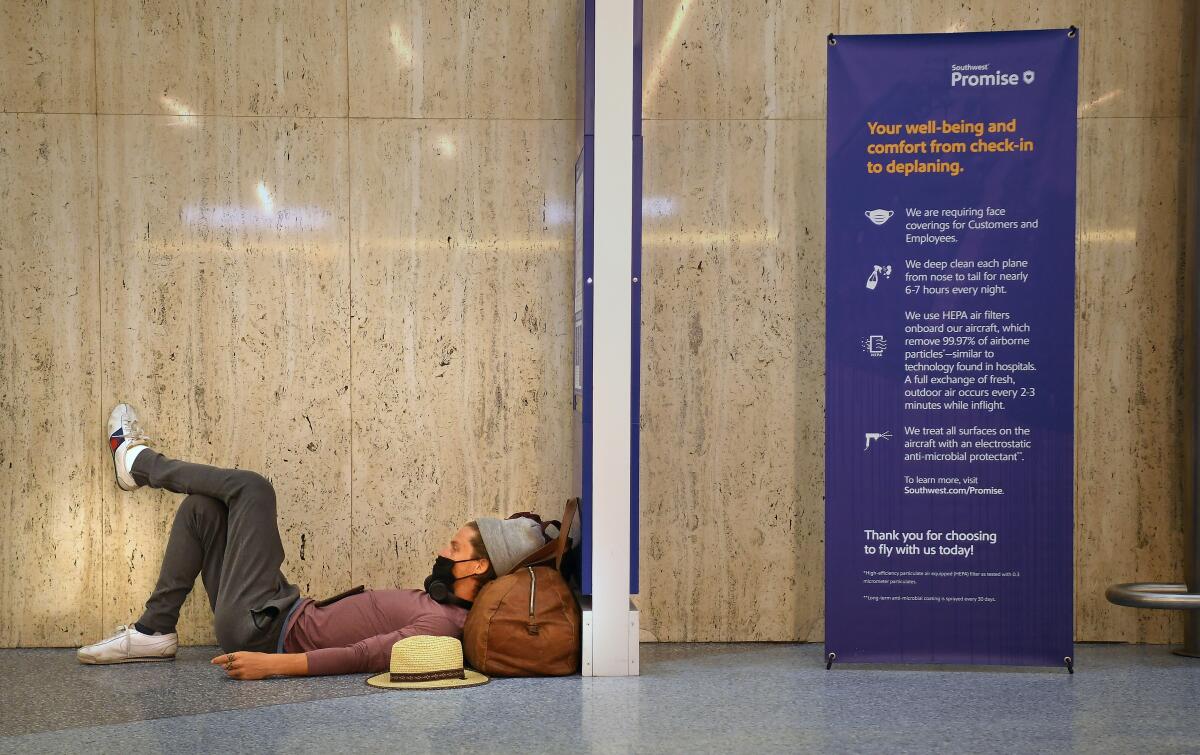
- Share via
The Centers for Disease Control and Prevention, which has been urging Americans to stay close to home for months, updated its advice Thursday to an even blunter message: Stay home for Thanksgiving.
“Postponing travel and staying home is the best way to protect yourself and others this year,” the CDC said in new rules posted Thursday.
How to travel this holiday season by plane, train and car, and how to safely stay in a hotel or a rental. If you’re staying local, we have ideas for how to spend the time.
The agency posed several questions to ask yourself and your loved ones. If the answer to any of them is “yes,” the agency said, “you should consider making other plans, such as hosting a virtual gathering or delaying your travel.”
The questions are:
- Are you, someone in your household or someone you will be visiting at an increased risk for getting very sick from COVID-19?
- Are cases high or increasing in your community or your destination? Check CDC’s COVID Data Tracker for the latest number of cases.
- Are hospitals in your community or your destination overwhelmed with patients who have COVID-19? To find out, check state and local public health department websites.
- Does your home or destination have requirements or restrictions for travelers? Check state and local requirements before you travel.
As you’re thinking about traveling this holiday season, you might ask yourself: What’s the infection level in your community? How many people are gathering? We have answers.
- During the 14 days before your travel, have you or those you are visiting had close contact with people they don’t live with?
- Do your plans include traveling by bus, train or air, which might make staying six feet apart difficult?
- Are you traveling with people who don’t live with you?
If you choose to travel or hold a gathering for Thanksgiving, the CDC offers this advice: Check local and state travel restrictions first, get a flu shot before departing, always wear a mask in public, stay at least six feet from anyone who does not live with you, and wash your hands and use hand sanitizer often. Avoid touching your mask and face as much as possible. Bring extra face coverings and hand sanitizer and be prepared to delay your travel.
If you will be a Thanksgiving guest, the CDC recommends, bring your own food, drinks, plates, cups and utensils, stay away from food preparation areas and employ single-use options, like salad dressing and condiment packets and disposable food containers, plates and utensils.
Experts urge travelers to avoid ride share, but if you have to use one, be aware of these guidelines. For example, Uber requires passengers to wear masks and Lyft forbids passengers from sitting in the front seat.
If you’re hosting for the holiday, the CDC said, you’re increasing risk with every person you bring in from outside your household. If you’re not willing to celebrate virtually with other households, the agency said, make the occasion “a small outdoor meal with family and friends who live in your community.”
Besides keeping the guest list as short as possible, the CDC said, hosts should talk in advance with guests “to set expectations for celebrating together.”
In addition: clean and disinfect frequently touched surfaces and items between uses. If you insist on celebrating indoors, “bring in fresh air by opening windows and doors, if possible. You can use a window fan in one of the open windows to blow air out of the window. This will pull fresh air in through the other open windows.”
Other tactics: Have guests bring their own food, drink and utensils or use single-use options, like plastic utensils.
For those looking to travel this holiday season with kids, take advantage of technology, keep lots of hand sanitizer at the ready and do some research beforehand.
With COVID-19 infection, hospitalization and death numbers rising dramatically nationwide, many individuals and families are rethinking travel plans that seemed reasonable a week or two ago. Others seem to be sticking with their travel itineraries, resulting in widely disparate estimates about how many people will be taking to the road for the holiday.
If you’re still thinking of traveling, consider ways you can lower your risk of infection, whether you fly, take a train or bus, or drive.
The CDC underscores how you might contract the virus if you’re flying by coming in contact with people while queuing up in TSA security lines and waiting in airport terminals. Here are our tips on how to navigate LAX during the COVID-19 pandemic. One easy takeaway: Go nuts with hand sanitizer. Hundreds of stations have been installed throughout terminals.
How are you going to get to the airport? Here’s what you need to know if you plan to take Uber or Lyft, and here’s what to consider if you are taking public transit.
If you’re traveling with children, there are extra precautions to take, like bringing plenty of electronic games to keep them occupied. Teach them how to properly wear a mask. Here are more tips for traveling with kids.
Car travel might lower your risk of exposure. You still have to stop for gas and bathroom breaks, but you can pack a cooler with drinks and snacks to keep rest stops to a minimum. Here are more tips on keeping yourself safe while hitting the road.
If your destination involves staying at a vacation rental, check out our guide to best practices when you get there.
Need to stay at a hotel or motel? Try these pandemic tactics.
What Airbnb and VRBO’s “flexible cancellation policies” actually mean.
The American Automobile Assn., drawing upon forecasts made in mid-October, predicted up to 50 million Americans would travel for this Thanksgiving, mostly by car — a relatively modest drop from 55 million in 2019.
However, the association said in a release last week: “As the holiday approaches and Americans monitor the public health landscape, including rising COVID-19 positive case numbers, renewed quarantine restrictions and the Centers for Disease Control and Prevention’s travel health notices, AAA expects the actual number of holiday travelers will be even lower.”
The AAA is also forecasting that those who travel “are likely to drive shorter distances and reduce the number of days they are away.” Travel by automobile, the AAA said, “is projected to fall 4.3%, to 47.8 million travelers and account for 95% of all holiday travel.”
More to Read
Sign up for The Wild
We’ll help you find the best places to hike, bike and run, as well as the perfect silent spots for meditation and yoga.
You may occasionally receive promotional content from the Los Angeles Times.
